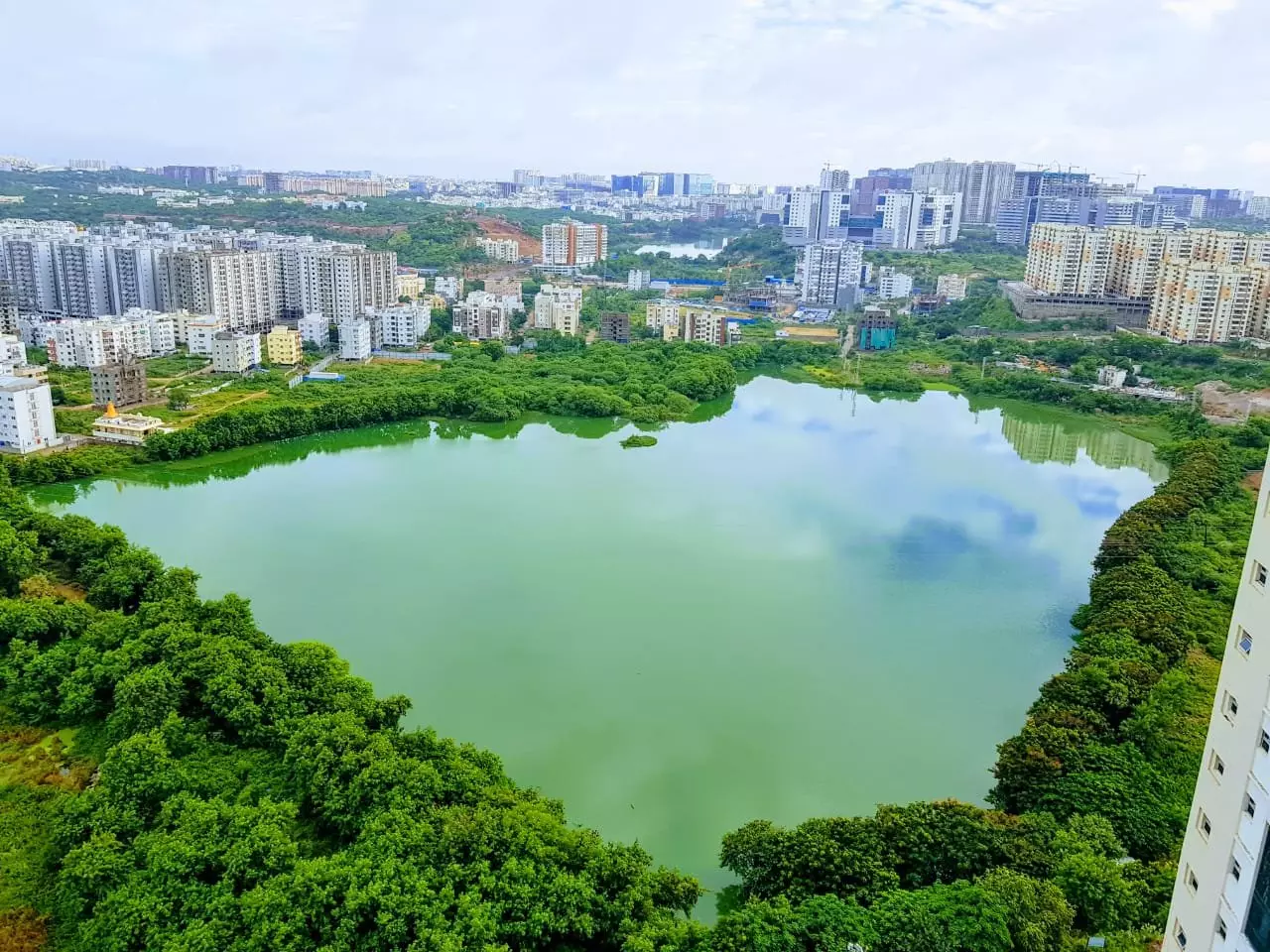DC Explainer: What is FTL and Buffer Zone

A lake in Hyderabad. (Photo: X)
Hyderabad: The terms FTL and Buffer Zone have been frequently mentioned in the news following the Hyderabad Disaster Response and Assets Monitoring and Protection Agency (HYDRAA)'s demolition of unauthorized structures in the city.
Let's dive deeper into what these terms mean:
Full Tank Level (FTL)
FTL refers to the maximum water level that a lake, tank, or other water body can reach, representing the upper limit of water storage. It indicates the highest point that water can log or traces of water can be found around the lake or water body.
Buffer Zone
The Buffer Zone is the designated area around the FTL that is kept clear of any development. The width of the Buffer Zone varies based on the size of the lake or nala (a stream or watercourse). This zone is crucial for preventing encroachments and preserving the natural ecosystem around the water bodies.
Nala and Lake Maps
Maps are being created that show the Full Tank Level (FTL) boundaries, the coordinates (latitude and longitude), and the Buffer Zones around lakes. These maps are then superimposed with the Revenue survey numbers of the relevant village maps, providing a clear demarcation of protected areas.
Ground Rules as per Irrigation/Revenue Department Rule Book:
1. No Development in Water Bodies: No construction or development activity is allowed in the beds of water bodies like rivers, nalas, or within the FTL of any lake, pond, cheruvu (reservoir), or kunta (small lake)/shikam (wetland) lands, unless specifically stated otherwise. The FTL and the area of the lake or kunta should be measured and certified by the Irrigation Department and Revenue Department.
Buffer Zones:
- 50 meters from the boundary of a river within the limits of Municipal Corporation, Municipality, Nagara Panchayat, HMDA (Hyderabad Metropolitan Development Authority), or UDA (Urban Development Authority).
- 30 meters from the FTL boundary of lakes, tanks, or kuntas with an area of 10 hectares (Ha) or more, with a 12-feet-wide walking/cycling track within the 30-meter buffer strip.
- 9 meters from the FTL boundary of lakes, tanks, or kuntas with an area of less than 10 hectares/shikam lands.
- 9 meters from the defined boundary of a canal, vagu (small stream), nala, or stormwater drain with a width of more than 10 meters.
- 2 meters from the defined boundary of a canal, vagu, nala, or stormwater drain with a width of up to 10 meters.
( Source : Deccan Chronicle )
Next Story

